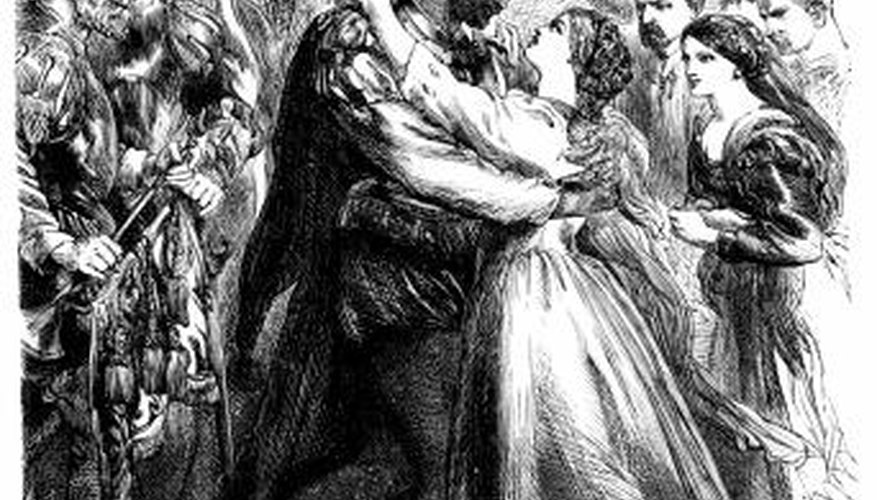William Shakespeare's "Othello" is one of his greatest tragedies, according to University of Texas theatre professor, Dr. Oscar G. Brocket. Written in 1604, about 12 years before his death, Shakespeare used props in "Othello" to serve as symbols for the themes. Expressed with only a few props, the play's themes are revenge, love and jealousy. Shakespeare's minimal approach made props crucial to understanding his stories and their universal, yet timeless themes.
Summary
Othello, the ruler of Venice, promotes Cassio, a brilliant officer in his army. Iago, Othello's adviser, is envious and angry about Cassio's promotion. Vowing revenge, Iago plans to destroy Othello and blame Cassio. Through a series of deceptive schemes, Iago convinces Othello his beloved wife, Desdemona, which means "unfortunate" in Greek, had an affair with Cassio. Maddened by his jealousy, Othello murders her then commits suicide when he learns the truth about Iago's wicked plan.
- Othello, the ruler of Venice, promotes Cassio, a brilliant officer in his army.
- Through a series of deceptive schemes, Iago convinces Othello his beloved wife, Desdemona, which means "unfortunate" in Greek, had an affair with Cassio.
Torches
Torches, which represent truth, are the first props in the play to denote a theme. When Othello and Iago enter in Act 1, their two attendants follow them carrying torches. The mixture of light and shadows or lies show how the two are blurred revealing only partial truth. Brabantio, Desdemona's father, and Roderigo, Cassio's friend, also enter under torch light. Iago manipulates them as part of his plot. He twists the truth into lies to serve his revenge. The torches disappear until the final act.
- Torches, which represent truth, are the first props in the play to denote a theme.
Handkerchief
The most significant prop in "Othello" is Desdemona's white handkerchief, a gift from her husband during their honeymoon. It appears more than any other prop, and represents his love for her; his father gave it to Othello's mother. Desdemona even uses it in Act 3 to soothe his headache. Iago turns it into a false symbol of Desdemona's betrayal by planting it in Cassio's room. When Othello discovers Cassio with it, the handkerchief serves to confirm the affair.
- The most significant prop in "Othello" is Desdemona's white handkerchief, a gift from her husband during their honeymoon.
Bed
Desdemona's bed, first seen in Act 2, is an important symbol in the play. The ultimate sign of fidelity between her and Othello, it becomes the scene of her demise. In the final act, Othello enters her bedroom holding a torch to find her asleep. He confronts her about Cassio, which she denies but he refuses to believe. Othello storms around the bed tossing covers and pillows. He climbs on the bed and smothers her with pillows.
- Desdemona's bed, first seen in Act 2, is an important symbol in the play.
- In the final act, Othello enters her bedroom holding a torch to find her asleep.
